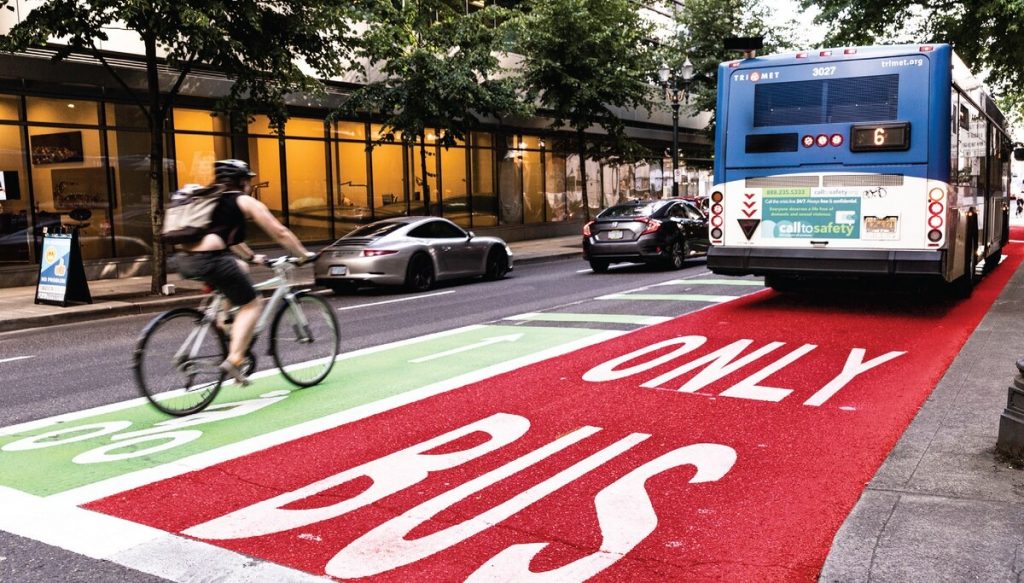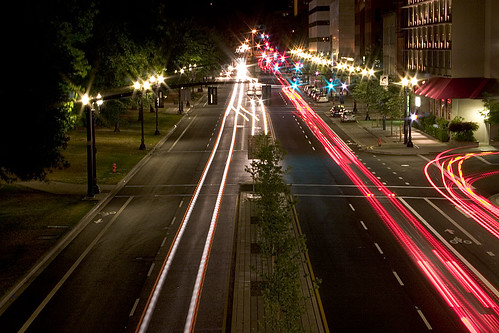
Smarter transportation case study #5: Traffic signal optimization; Portland, Oregon
Portland officials improved the timing and coordination of traffic signals in 17 key intersections, resulting in lower auto emissions and less traffic.
In 2002, the Climate Trust, a Portland-based non-profit, contracted with the City of Port- land to buy offsets from a project aimed at improving traffic signals.
 |
| Naito at Night Originally uploaded by ahockley to Flickr. |
| Portland traffic flowing smoothly at night. |
The traffic signal optimization project ensures maximum green light times for the heaviest traffic flows and allows signal cycle time to adjust based on changing demands during peak times, such as rush hour. Seventeen major arterials were identified for improved signal timing using studies on optimizing traffic flow and reducing gridlock.
“It’s like having the Internet for our transpor- tation system,” said Peter Koonce, Division Manager of Signals and Street Lighting for the City of Portland.
After the signal timing has been completed, the Climate Trust pays Portland based upon the amount of carbon dioxide emissions that will be avoided.
In the program’s first six years, more than 157,000 metric tons of carbon dioxide emissions were prevented, the equivalent of the emissions generated from burning 17.7 million gallons of gasoline. As a result of this success, city officials extended the partnership contract through 2012 with a goal of reducing an additional 21,000 metric tons of carbon dioxide.
The project was awarded a ‘Smart Solutions Spotlight’ from ITS America in February 2010.
For More Information: Daily Journal of Commerce, Oregon
—-
Editor’s Note: Our new report on smarter mobility demonstrates how existing and emerging technologies can squeeze more capacity from over-burdened highways, help commuters avoid traffic delays and expand and improve transportation options, all while saving money and creating jobs. Many of these smart transportation solutions are already fueling innovation throughout the country, through both the public and private sector. These 14 case studies from around the U.S. and the world demonstrate the community benefits smart mobility solutions are giving regions, cities, and businesses.





